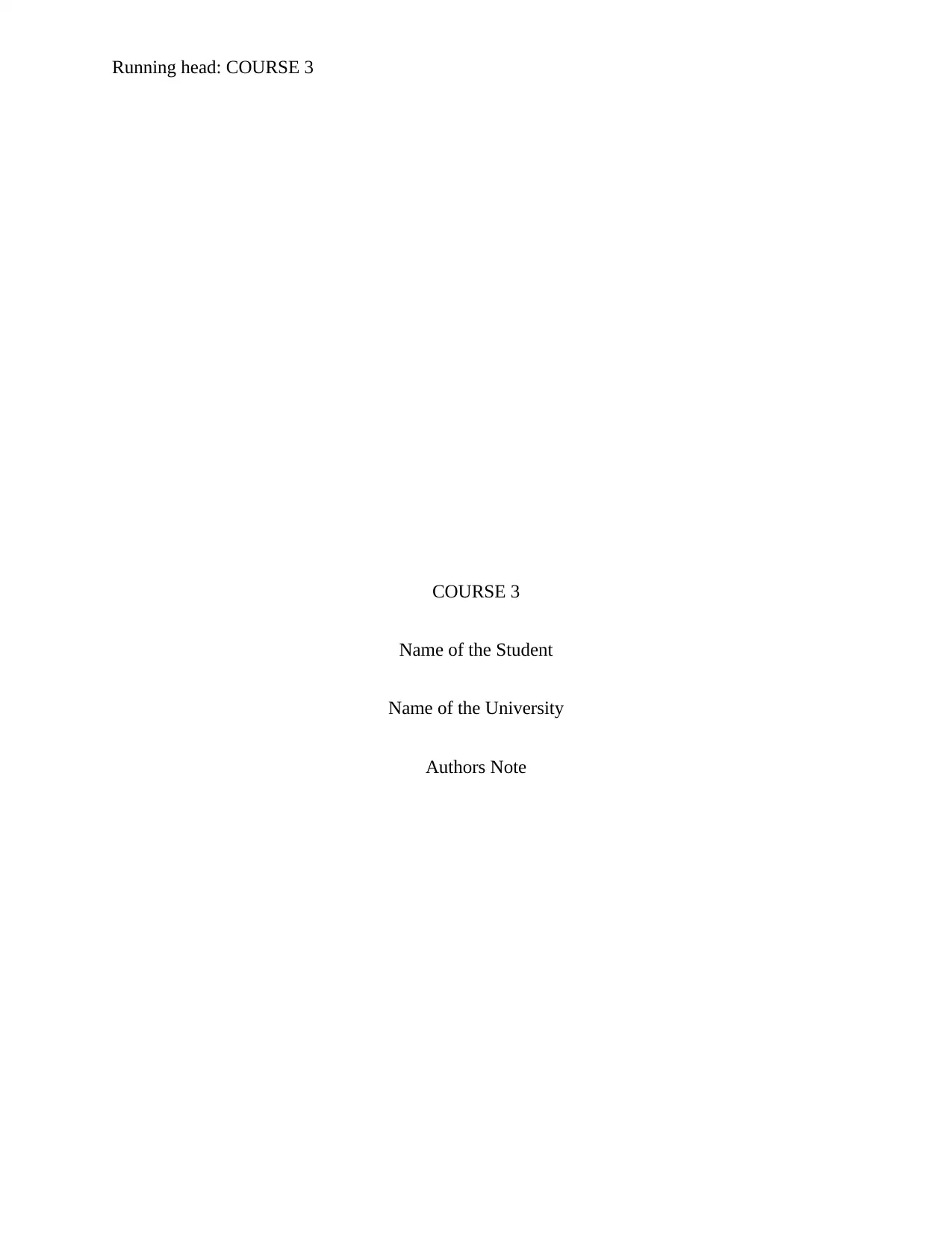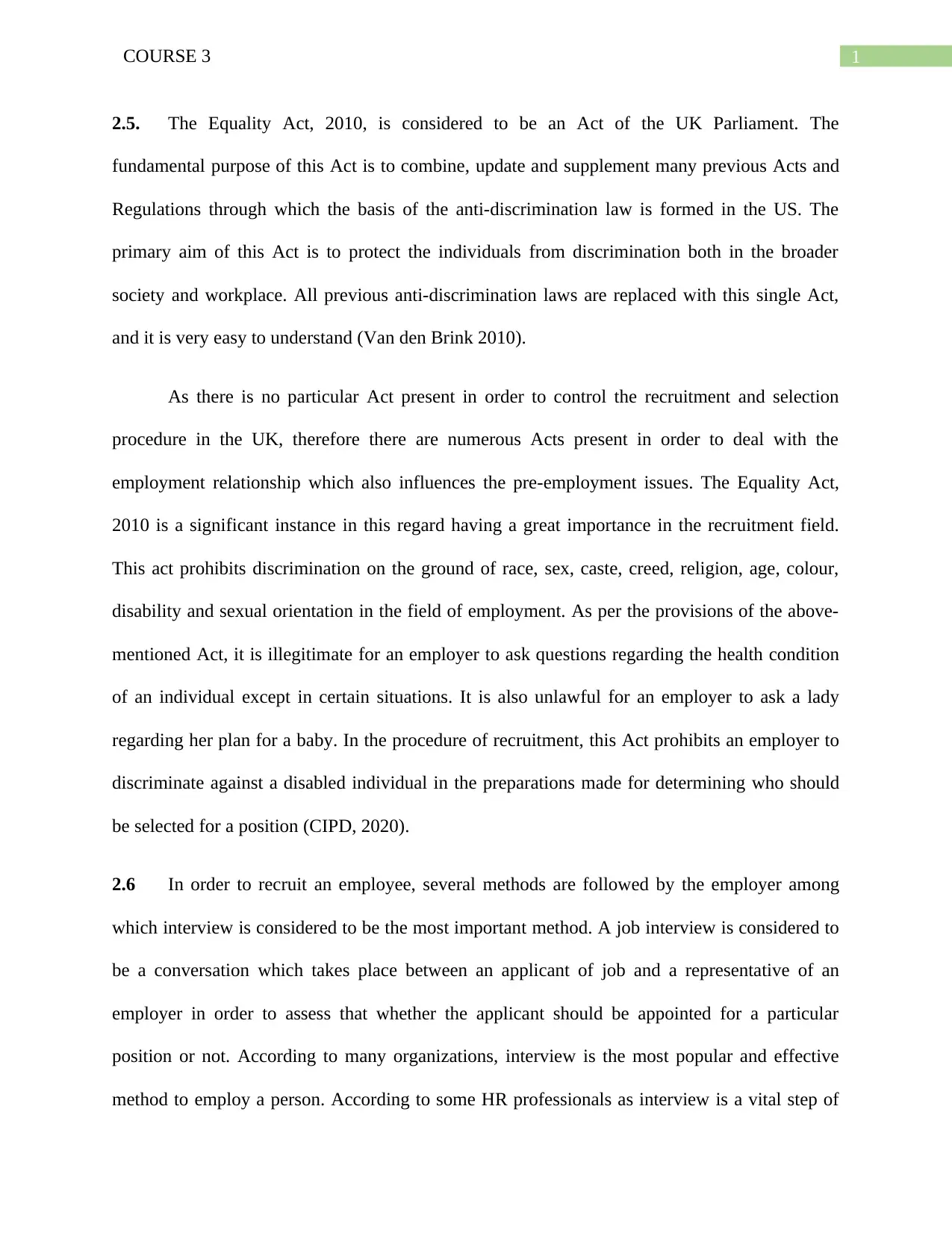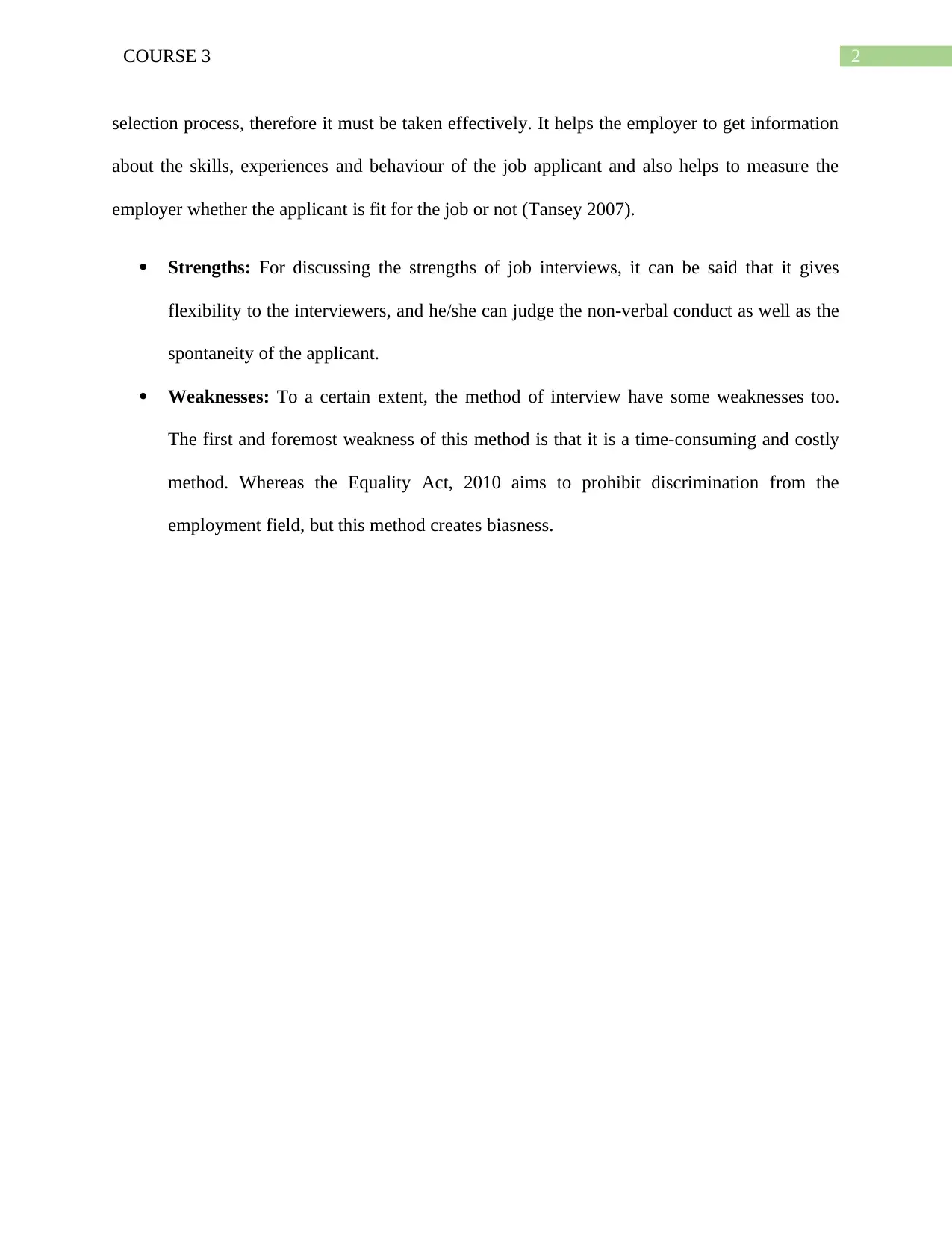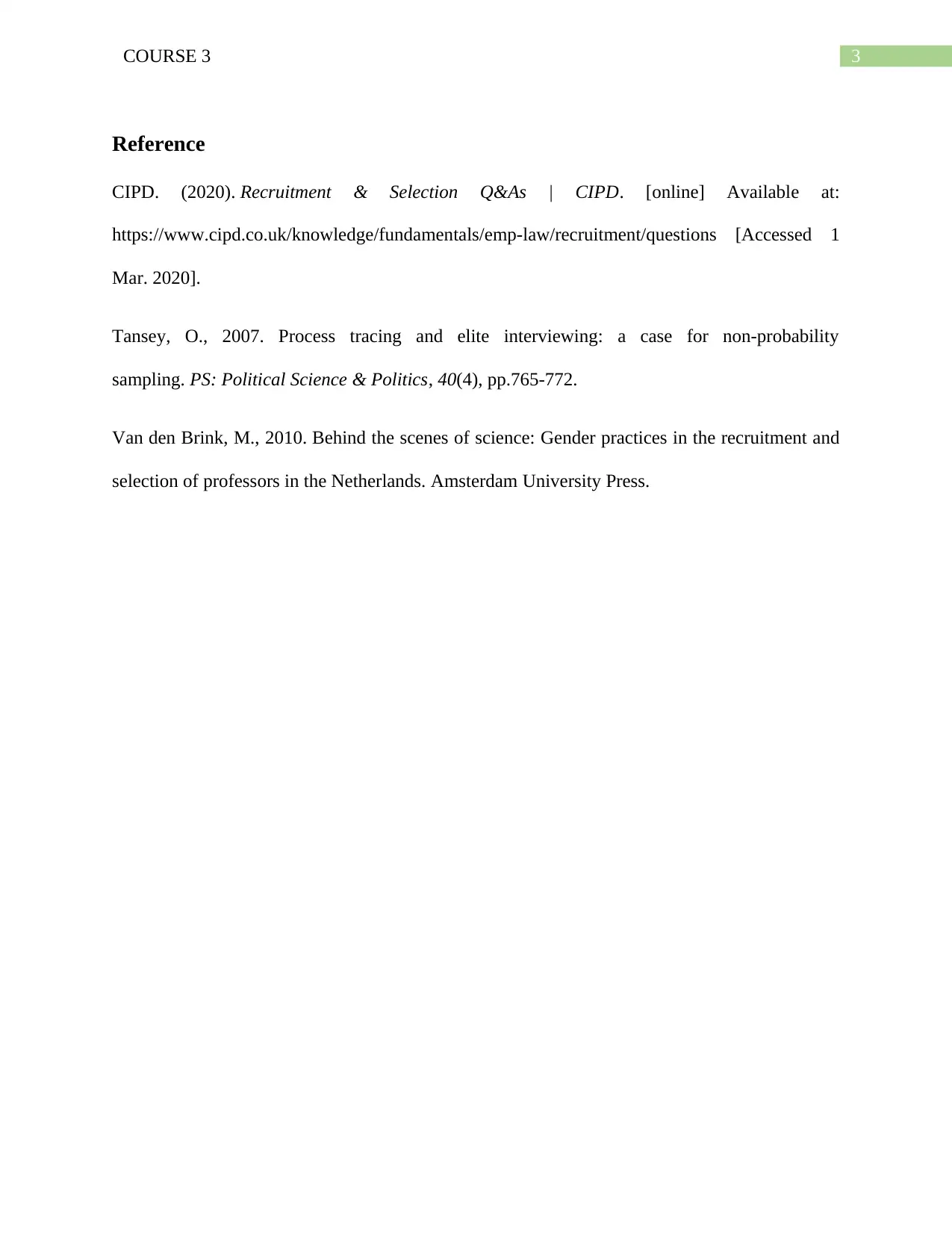University Course 3: Legal Requirements in Recruitment and Selection
VerifiedAdded on 2022/08/12
|4
|635
|28
Report
AI Summary
This report provides an overview of the legal requirements associated with recruitment and selection processes, with a specific focus on the Equality Act 2010. The report outlines the key provisions of the Act, emphasizing its role in preventing discrimination based on various protected characteristics in the employment context. Furthermore, the report assesses different methods of recruitment and selection, with a detailed analysis of interviews as a selection method. It examines the strengths of interviews, such as flexibility and the ability to assess non-verbal cues, while also addressing their weaknesses, including potential biases and time constraints. References from CIPD and other sources are used to support the analysis. This report is designed to provide insights into the critical aspects of recruitment and selection, especially the importance of adhering to legal requirements and selecting appropriate methods.
1 out of 4










![[object Object]](/_next/static/media/star-bottom.7253800d.svg)